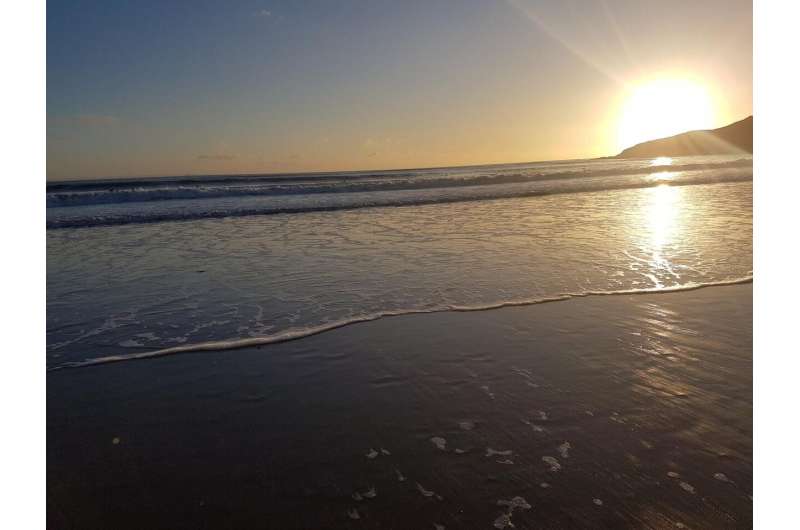New research provides an insight into the behavior of mycosporine-like amino acids which protect living organisms in our oceans and lakes from the damaging effects of ultraviolet radiation. Credit: Swansea University
Swansea University research has provided a new insight into the behavior of nature's own UV sunscreens when they are exposed to other parts of the light spectrum.
Mycosporine-like amino acids (MAAs) provide screening against the damaging effects of ultraviolet radiation in living organisms in our oceans and lakes.
These compounds are known to increase in the environment where levels of UV are high. The uniqueness of these compounds has led to interest from the healthcare industry in the development of more natural sunscreen formulations.
But a new study by scientists at Swansea University has found that these compounds are also increased when living cells of algae are exposed to light at the far-red end of the light spectrum.
Whilst it is widely known that UV light increases the concentrations of MAAs no-one had investigated the effects of other regions of the light spectrum.
The study's author Professor Carole Llewellyn, from the Faculty of Engineering and Science, said: "It is interesting that the far-red light plays a role in the production of these UV sunscreen compounds and highlights how different regions of the light spectrum play an important role in maintaining a healthy balance within cells."
"Our discovery also highlights the complex interplay in nature and throws into question the role of these sunscreen compounds with the possibility that that they could also be important in contributing to temperature regulation of the earth's surface."
More information: Carole A. Llewellyn et al, Mycosporine-like amino acid and aromatic amino acid transcriptome response to UV and far-red light in the cyanobacterium Chlorogloeopsis fritschii PCC 6912, Scientific Reports (2020). DOI: 10.1038/s41598-020-77402-6
Journal information: Scientific Reports
Provided by Swansea University
























